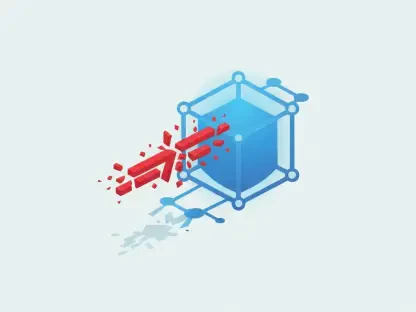The vast influx of data generated from sensors, social media, and online transactions necessitates robust analytical tools capable of handling high velocity and volume. Developed by the Machine Learning Group at the University of Waikato, Massive Online Analysis (MOA) is an open-source software framework specifically designed to manage and analyze these data streams in real time. This technology’s profound impact on various industries is noteworthy, as MOA’s versatility and capacity for continuous learning offer transformative solutions for a wide range of applications.
Unleashing the Power of MOA
Real-Time Analysis for Dynamic Data
The core advantage of MOA lies in its unparalleled ability to analyze and act upon data streams in real time, something crucial for maintaining timely decision-making in dynamic data environments. Traditional batch processing methods, which rely on static datasets, fall short when it comes to the transient and ever-changing nature of data streams. MOA, on the other hand, employs incremental learning algorithms that update models continuously with each new data point. This real-time analysis capability revolutionizes several domains, enabling instant responses to evolving data patterns and enhancing overall efficacy.
MOA’s incremental learning approach is designed to handle the high throughput of data streams by processing instances as they arrive, allowing for continuous model adaptation and improvement. This method ensures that the most recent data influences the predictive models, maintaining their relevance without needing access to the entirety of the dataset. Compared to traditional batch processing, which is not feasible for vast, unbounded data streams, incremental learning fosters agility and responsiveness in data analysis. This ability to swiftly incorporate new data points is a game-changer across fields like finance, healthcare, and logistics.
Core Algorithmic Approaches
MOA’s robust algorithmic framework is instrumental in its success, employing several advanced techniques tailored for data stream mining. At the heart of its functionality is incremental learning, which updates predictive or descriptive models one instance at a time. This approach ensures that the models are continuously refreshed and can adapt to any changes in the data stream, offering a significant advantage over batch learning models that require access to entire datasets and are impractical for ongoing data streams.
Handling concept drift is another critical area where MOA excels. Concept drift refers to changes in the statistical properties of the target variable over time, which can lead to outdated models. MOA’s algorithms are specifically designed to detect and adapt to these fluctuations, thereby maintaining model accuracy. For instance, by assigning more weight to recent data or using sliding windows, MOA ensures that the models remain relevant and reliable. Additionally, the incorporation of ensemble methods like bagging and boosting enhances the stability and resilience of these models against noise and rapid data changes.
Versatility in Applications
Applications Across Domains
MOA’s ability to handle real-time data streams renders it invaluable across a plethora of industries, each benefitting uniquely from its advanced capabilities. In the financial sector, MOA’s real-time analytical prowess proves essential in fraud detection. By continuously monitoring transaction streams and identifying suspicious patterns swiftly, MOA helps mitigate risks and prevent significant financial losses. Its ability to adapt to new fraudulent tactics ensures continuous protection in an ever-evolving threat landscape.
Social media monitoring is another domain where MOA’s features shine. The technology’s capability to process vast amounts of data in real time allows businesses and organizations to track trends, gauge public sentiment, and detect emerging topics swiftly. This immediate feedback is crucial for formulating informed marketing strategies and adjusting them on the fly, thereby facilitating a more dynamic and responsive marketing approach. The environmental sensing sector also benefits significantly, as MOA helps in monitoring sensor networks, detecting anomalies, and predicting events. This functionality supports timely and effective responses, which are critical in fields such as weather forecasting and environmental research.
Key Features and Scalability
MOA’s robust feature set and scalability are central to its widespread adoption and utility across various data-intensive sectors. Its ability to process large-scale data streams efficiently ensures that analyses are performed in a timely manner, without causing bottlenecks. This high throughput capacity is particularly beneficial in environments where data volumes are enormous and the need for rapid analysis is paramount. Scalability also ensures that as data volumes grow, the system’s performance remains unaffected, maintaining consistent processing speeds and reliability.
Another standout feature of MOA is its extensibility, which allows researchers and developers to integrate new algorithms into the framework seamlessly. This capability fosters a culture of continuous innovation, as new developments and improvements in data mining algorithms can be promptly incorporated. Combined with on-the-fly learning and model updating, MOA is ideally suited for dynamic data environments. Its comprehensive suite of algorithms for tasks like classification, regression, and clustering, along with benchmarking tools that objectively assess algorithm performance, significantly enhances its practical value and application scope.
Overcoming Challenges
Addressing Common Issues
Despite its numerous advantages, MOA is not without challenges, prominently featuring aspects such as handling data skewness, managing resource constraints, and ensuring data privacy. Addressing data skewness involves developing algorithms that can manage and balance uneven data distributions to maintain model accuracy. Resource constraints, particularly memory and processing power, necessitate MOA’s algorithms to be highly efficient, often employing data summarization techniques to create a compact representation of vast data streams.
Ensuring data privacy is paramount, especially when dealing with sensitive information across various domains. MOA must incorporate robust encryption and anonymization techniques to protect data integrity and comply with regulatory standards. The ongoing development of algorithms continues to focus on fortifying these areas, ensuring MOA remains effective and trustworthy. By integrating with distributed data streaming platforms like Apache Kafka, MOA has expanded its capabilities, allowing it to handle more complex data streams and broader applications.
Pioneering Future Prospects
MOA’s future is intrinsically linked to the advancements in streaming analytics and the burgeoning prevalence of the Internet of Things (IoT). As more devices generate substantial amounts of data, MOA’s role in extracting actionable insights becomes increasingly crucial. One focal area for researchers is developing sophisticated algorithms capable of handling this data’s complexity and diversity. These advancements will enable more nuanced and precise analyses, providing deeper insights and facilitating better decision-making across various sectors.
The ever-growing community supporting MOA ensures that it remains at the cutting edge of real-time data stream mining innovations. This commitment to continuous improvement and adaptation guarantees that MOA will meet and exceed the demands of future data landscapes. As sectors like finance, healthcare, and manufacturing become more data-driven, the need for robust, scalable, and efficient data analysis tools like MOA will be indispensable. The promising future of MOA lies in its potential to unlock new levels of operational efficiency and insight, driving transformative changes across numerous industries.
Impact and Conclusion
The massive spike in data generated by sensors, social media, and online transactions demands highly efficient analytical tools that can manage both the speed and volume of this information. Developed by the Machine Learning Group at the University of Waikato, Massive Online Analysis (MOA) is an open-source software framework explicitly crafted to process and scrutinize these data streams in real-time. MOA’s capability to handle continuous data flow makes it particularly significant across various sectors. Its robust versatility and ability for continuous learning provide game-changing solutions for a diverse set of applications, such as marketing, financial modeling, real-time monitoring, and predictive maintenance. The adaptability of MOA to different industries highlights its critical role in enabling organizations to leverage big data efficiently. As industries increasingly depend on real-time data for making informed decisions, the advanced analytical prowess of MOA illustrates a step forward in driving operational efficiency and innovation across numerous fields.









